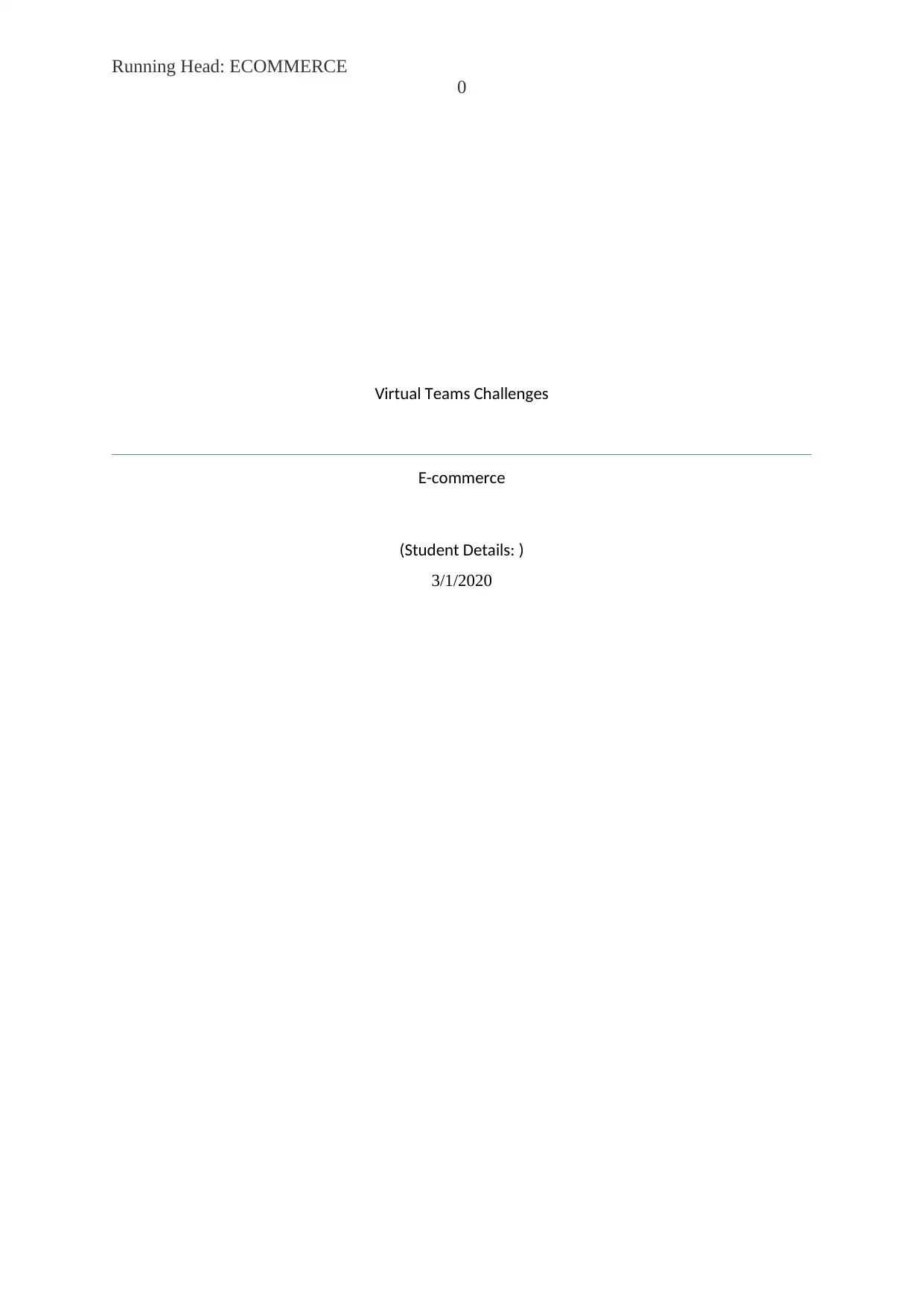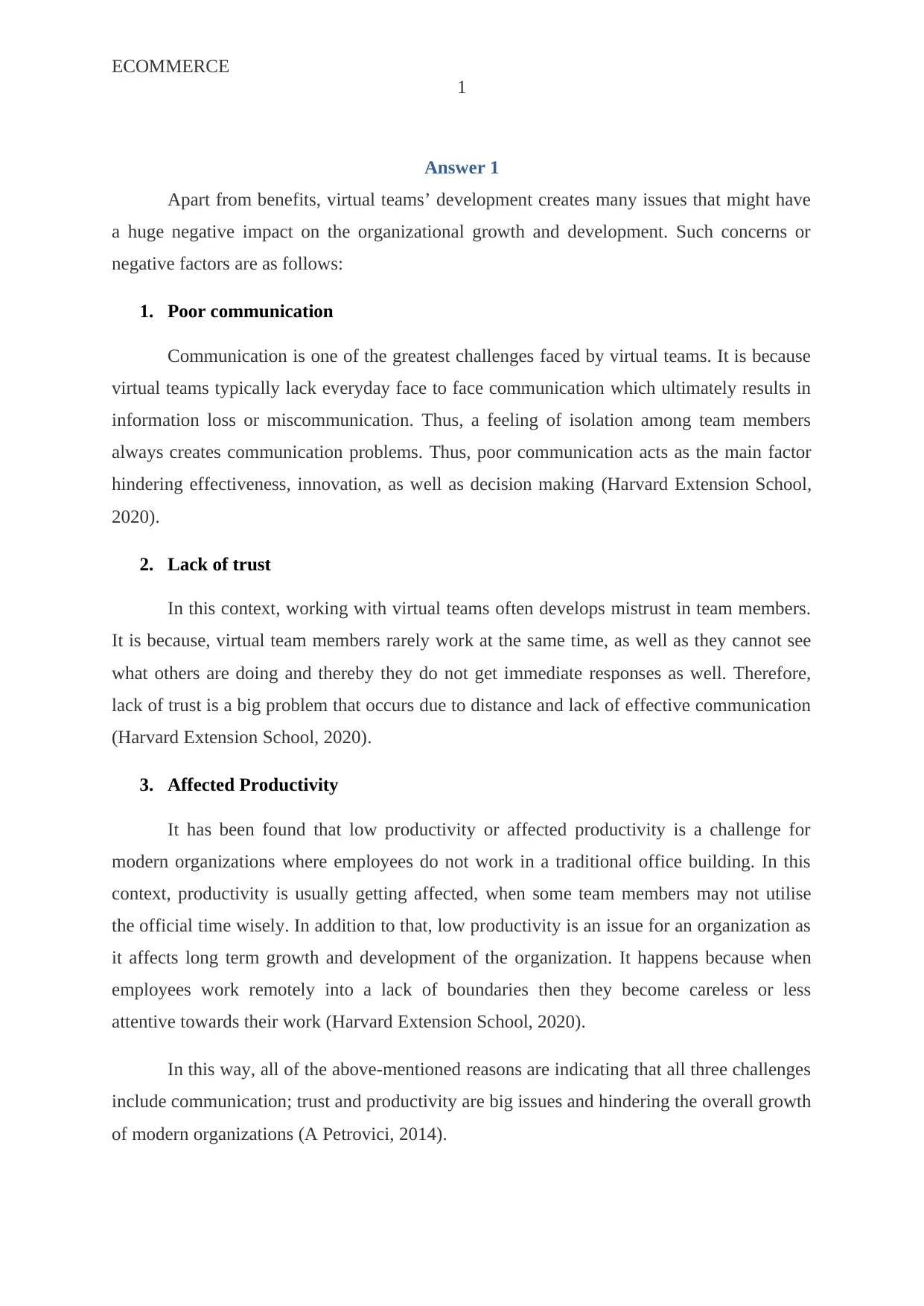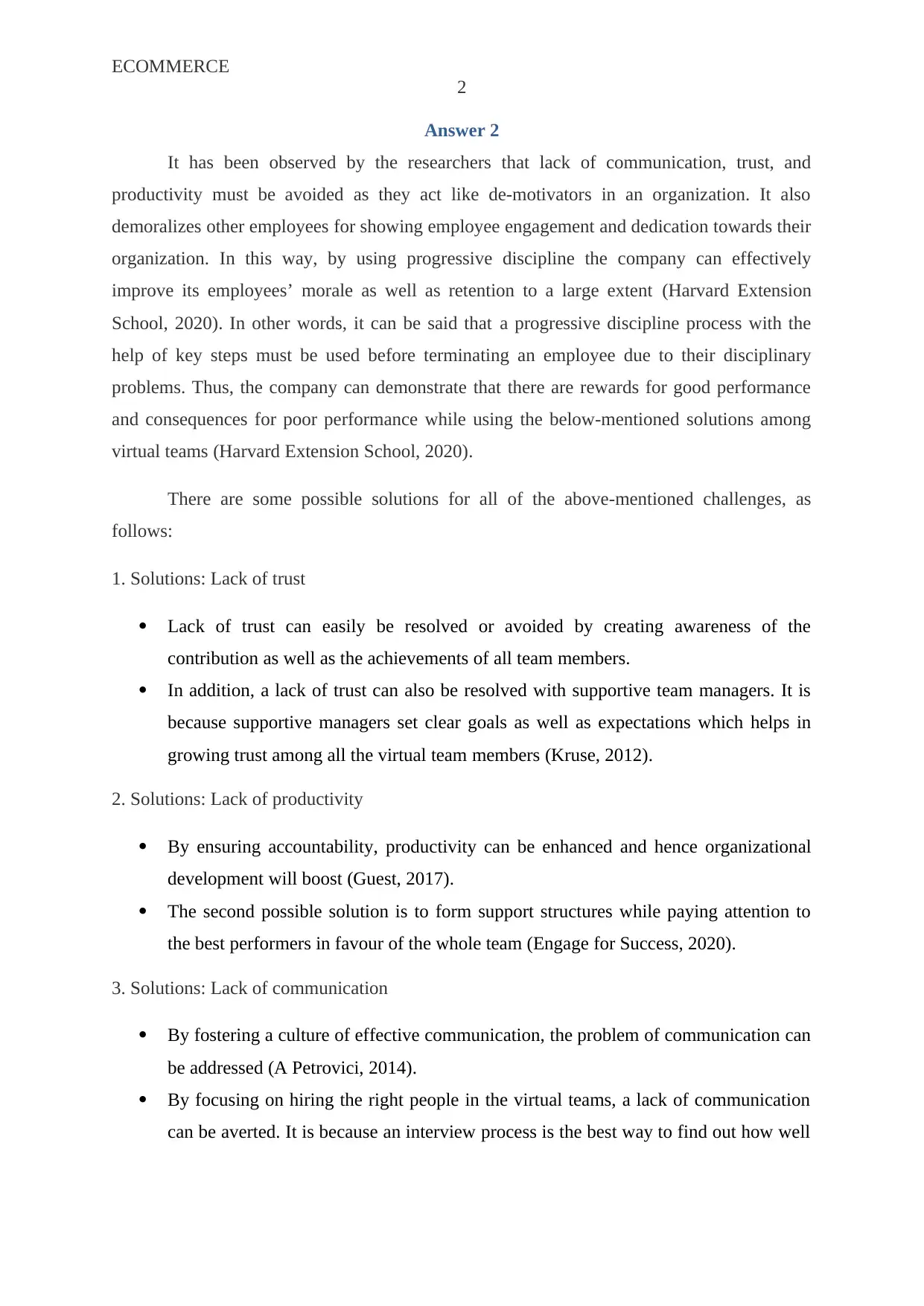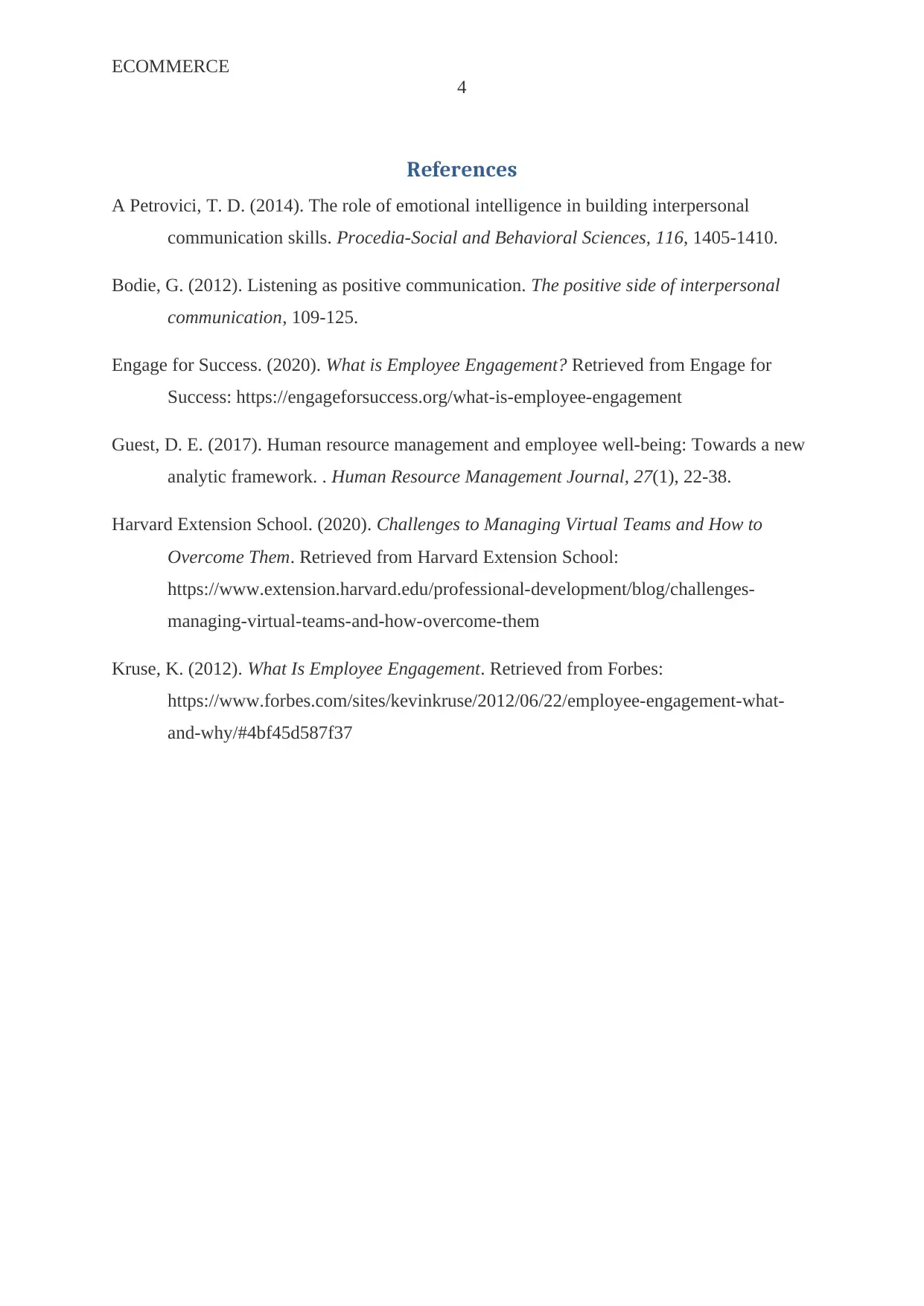E-commerce (ECOM201): Virtual Teams Challenges and Solutions Report
VerifiedAdded on 2022/08/12
|5
|895
|25
Report
AI Summary
This report addresses the challenges associated with virtual teams in the context of e-commerce, focusing on issues such as poor communication, lack of trust, and affected productivity. The report defines each negative factor and explains its impact on organizational growth and development. It highlights that poor communication leads to information loss and isolation, lack of trust arises from the inability to observe team members' work, and affected productivity stems from a lack of boundaries and accountability in remote work environments. The report then proposes solutions to mitigate these challenges, including fostering effective communication, building trust through awareness of contributions and supportive management, and enhancing productivity through accountability and support structures. References from sources like Harvard Extension School, Forbes, and Engage for Success are provided to support the analysis and proposed solutions. The report aims to provide a comprehensive overview of challenges and solutions for virtual teams in e-commerce, aiding in improved team performance and organizational success.
1 out of 5












![[object Object]](/_next/static/media/star-bottom.7253800d.svg)